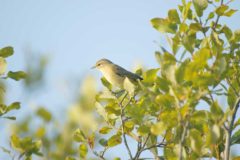 Wildlife expert Jenny Shelton explains how you can make your park home garden a more attractive proposition for the birds, bees and everything in between…
Wildlife expert Jenny Shelton explains how you can make your park home garden a more attractive proposition for the birds, bees and everything in between…
We might be spending more time in our gardens again this spring so get planting now to ensure you have the perfect backdrop for any responsible get-togethers. While you do so, keep in mind what works well for nature. There’s a common misconception that wildlife gardens have to be messy… and while too-tidy gardens and plastic lawns aren’t likely to attract many birds, you can absolutely create a haven for wildlife that’s also a picturesque place to spend time.
Flower power
Cottage gardens have a certain something, don’t they? I just love them: for the look as much as the nostalgia they evoke. Foxgloves, cornflowers, salvia and scabious are great choices for a natural garden. Look for the ‘good for bees’ labels in garden centres or even order online. I’ve had great success too with echinacea, cosmos and verbena – all equally pretty and popular with pollinators. Certain seeds can be sown at this time of year too for late summer colour. Honeysuckles meanwhile will reward you with that wonderful evening scent while serving up nectar for moths.
Leave it long
Nature loves variety, and so do we! When cutting your lawn, consider creating different lengths to give wildflowers a chance to establish. (You could even sow a wildflower seed mix to give longer areas a boost). Get creative: a teardrop shape of long grass can look attractive as well as providing cover for wildlife and food for bees and butterflies. You could leave a circle at the base of a tree, or mow a meandering path through your mini meadow so you can walk among the blooms.
Plant a tree
Fruit trees can be a great option for smaller gardens, giving year-round enjoyment with blossom in spring, green foliage in summer and fruit in the autumn. This is great for wildlife too, as pollinators will enjoy the spring blossom and birds like redwings, fieldfares and maybe even waxwings will thank you for the bounty of berries or fruits later in the year.
Cover story
Birds and wildlife also need places to hide. Ivy growing up an otherwise bare fence will provide cover as well as muffling sound and helping your garden feel more private. Try and avoid Virginia creeper, which is non-native and invasive, and 1980s favourite leylandii offers very little to wildlife: pyracantha or holly, with their berries and dense foliage, are much more inviting.

Dig a pond
One of the very best things you can do for nature is to introduce water to your garden. Birds will use even the smallest pond for drinking and bathing (ensure there’s a shallow end), and you might get dragonflies and damselflies zipping by to investigate. It’s amazing how quickly wildlife will find it: when I dug my first (tiny) pond, I’d barely finished filling it up with rainwater from the water butt when a frog jumped in! Rocks placed nearby will help give amphibians the shelter they need. There’s lots of information online – see the RSPB or Wildlife Trusts websites for how-to guides.
What to spot
Butterflies: Orange tip, comma, large white, painted lady, peacock and red admiral are all easily seen in UK gardens.
Bees: There are over 200 species of bee in the UK! Even bumblebees all look different. Solitary bees don’t live in hives but nest alone in tiny holes in walls, and will happily check in to a bee hotel.
Birds: You’re all bird experts now, so keep looking out for those garden favourites like blue tits and great tits, goldfinches, blackbirds and starlings.


